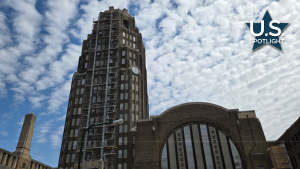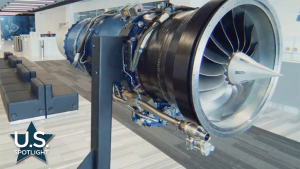Severe construction workforce shortages are becoming the norm in the U.S. and could undermine the build of infrastructure projects as contractors big and small are having trouble filling open positions, according to a survey that was done by the Associated General Contractors (AGC) of America and Autodesk.
Ninety-three per cent of firms who responded to the workforce survey reported they have open positions they are trying to fill and, among them, 91 per cent are having trouble filling at least some of those positions – particularly among the craft workforce that does the bulk of onsite construction work.
All types of firms are experiencing similar challenges, the survey states, and nearly identical results were reported by contractors that use exclusively union craft labour and by firms that operate as open-shop employers, as well as those doing building construction, highway and transportation projects.
The AGC maintains the shortages are hampering the industry’s ability to complete projects on time and on schedule and is threatening the success of new federal investments in infrastructure and manufacturing.
“Construction workforce shortages are severe and having a significant impact on construction firms of all types, all sizes and all labor arrangements,” says AGC chief economist Ken Simonson. “These workforce shortages are compounding the challenges firms are having with supply chain disruptions that are inflating the cost of construction materials and making delivery schedules and product availability uncertain.”
A main reason labor shortages are so severe, Simonson adds, is that most job candidates are not qualified to work in the industry. The most common explanation for difficulty in hiring, cited by 77 per cent of firms, is that available candidates lack the skills needed to work in construction or can not pass a drug test.
Eighty-two per cent of firms report projects they work on have been delayed because of supply chain challenges and two-thirds (66 per cent) have projects that have been delayed because of labor shortages.
Supply chain problems and labor shortages are making construction more expensive. Eighty-six per cent of firms have raised base pay rates for their workers while 70 per cent have passed along rising materials costs to project owners during the past year.
Cost and supply chain challenges, meanwhile, have prompted some owners to cancel or delay projects.
Many construction firms report they are taking steps to overcome workforce shortages. In addition to raising pay rates, 45 per cent are providing incentives and bonuses and a quarter of firms have also improved their benefits packages.
Construction firms are also getting more involved in preparing future workers for careers in construction. Fifty-one per cent of survey respondents – up from 37 per cent in a 2021 survey – report they have engaged with career-building programs such as high school, collegiate or technical school construction programs.
“While the majority of construction firms today are struggling to find skilled workers to fill open jobs, the labor shortage is only going to intensify as more workers retire,” notes Allison Scott, director, customer experience and industry advocacy at Autodesk. “What’s inspiring is that construction firms recognize this and are taking a proactive approach to preparing future workers for careers in construction. The renewed investments in career development and training programs, as well as a focus on digital skills demonstrates that the industry is committed to taking action to build the next generation of the workforce.”
Simonson warns without enough workers to keep pace with demand, the federal government’s new infrastructure funding and more recent investments in semiconductor factories and energy infrastructure projects will not deliver as much as promised.
The national association is calling on federal, state and local leaders to invest in career and technical education programs that expose more existing and future workers to the many career opportunities that exist in construction. The association is also urging federal officials to allow more workers to lawfully enter the country to help meet unfilled demand until the domestic pipeline for preparing workers is rebuilt.
The AGC and its chapters are supporting the industry with a broad range of workforce development initiatives, including a targeted digital recruiting campaign. The association is also pushing leaders to untangle supply chains that have been hammered by COVID lockdowns, shipping and manufacturing labor shortages and massive inflationary pressure.
“There is plenty of work for the industry to perform, there just aren’t enough people to do the work or materials to complete the projects,” says Simonson. “Addressing labor shortages and supply chain problems will ensure that the construction industry can upgrade America’s infrastructure, modernize its manufacturing sector and help deliver a more reliable and cleaner energy grid.”











Recent Comments